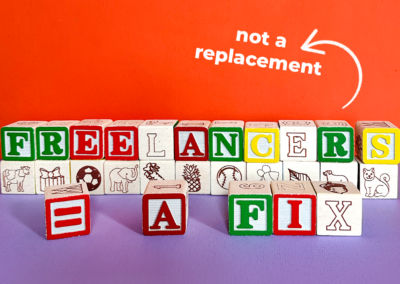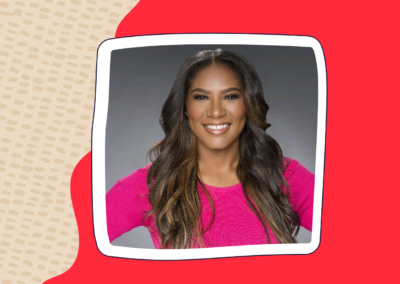It’s an understatement to say that 2020 was a year that will go down in the history books. Pretty much every adjective in the dictionary was leveraged to describe what happened, between the wide-reaching effects of the pandemic, the election the whole world watched, and the confluence of events that forced us to reconcile America’s history with racism.
On June 2, 2020, over twenty million people from around the world posted a solid black image on their Instagram feeds in solidarity with George Floyd and the Black Lives Matter movement with the hashtag #BlackOutTuesday. The idea was to show support and spotlight Black voices. This had a ripple effect as brands and celebrities came out in droves with their own white-text-over-black-banner posts expressing their support of Black Americans and denouncing white supremacy. However, it begged the questions: Where were these statements when Black Americans needed them most? And how much of it was performative?
In the world of marketing and advertising, every marketing team was frantically discussing whether their brand should say something, and if so, what they should say. Brands that went above and beyond the call of duty were applauded, and others were lambasted for simply checking the box with minimal effort.
Social media marketers are often on the frontlines. We’re in charge of implementing the voice and tone across every network. We have to stay on top of current events. And, most importantly, we know when to capitalize on an opportunity and when to stay on the sidelines. In that same vein, we must ensure that we aren’t working in a silo either. If we want a seat at the executive table, then it’s also our responsibility to educate our marketing peers and leaders on the good and the bad of social media, regardless of whether an opportunity presents itself. This ensures that the entire marketing ecosystem of your brand is well-acquainted with the fast-moving, internet zeitgeist, and prepared to make a move when the moment calls for it.
When the next big cultural moment hits, what can we do as social marketers to ensure we’re trending for the right reasons?
Understand Your Brand’s Values and Mission Statement
Nearly every day, social media marketers are asked to jump on the latest viral trend. While we may not have as much understanding of the brand’s overall strategies and direction as the CMO and/or our immediate client partners, our knowledge of what makes sense for the brand on social is unmatched. For cultural moments related to politics and race, we need to pump the brakes, read the room and ask ourselves what the motives are.
Women’s rights? Immigration? Voter registration? Diversity, equity and inclusion?
If a topic isn’t built within your brand’s ethos, then you need to tread carefully. Three years later that infamous Kendall Jenner-Pepsi ad is still mocked and dissected. Pepsi was (understandably) dragged for their tone-deafness because they were looking to monetarily capitalize on a sensitive subject, rather than get behind a cause.
However, Ben & Jerry’s wasn’t ostracized for blogging about white supremacy — because they have been proactively vocal for years. Whether it’s giving political names to seasonal flavors or writing blog posts about racial injustice, activism and advocacy are embedded within their company’s values. They aren’t looking to sell extra pints; rather, they are authentically looking to share pertinent information and engage in dialogue. And, this likely does end up with more pints sold to people who share their values.
Ross Simmonds said, people don’t want brands to capitalize on ads, but rather, to take a risk and stand up for something. So, if your brand is going to take that stand, make sure that it’s methodical and aligned with what’s important to the core of your company. The last thing you should be doing is making an empty promise, because the internet never forgets, and screenshots are forever.
Immediacy Isn’t Always Key
The opportunity to jump on a viral moment can come and go at the blink of an eye, which adds even more pressure on social media marketers to observe and respond as quickly as they can. Between The Weeknd’s lost sense of direction and Bernie Sanders’ mittens, meme and GIF culture are practically open season for brands to remain relevant and look hip.
However, flooring the gas pedal can have repercussions. Journalists and news organizations get burned for inaccurately reporting the news in the rush to be first. A similar logic applies to brands who try to insert themselves into trending topics — they certainly don’t want to end up as the main character of the day.
There’s a lot of paranoia for fear of backlash when being quiet during major, cultural moments, but consumers would prefer their favorite brands to have the best response, not the fastest. It’s incredibly important that social media teams (even the teams of one!) build an internal “war room” response team. This council can consist of peers and leaders from various departments (e.g. public relations, product, sales, human resources, etc.) to help determine the best course of action. Whether an emerging situation arises that affects your brand or your industry, or a news story shaping the day’s discourse, it’s important to have established pathways of cross-functional communication to collectively oversee all potential outcomes. When being active on social media during a current event, the goal is not to have too many cooks in the kitchen. This ensures that your recipe is on point for the best course of action amongst varying opinions.
Do More Than the Bare Minimum
After the recent attacks that have transpired against the AAPI community, brands once again came out with bold statements denouncing racism and white supremacy. This brings us back to the same question: This is great, but what else are you doing?
Last year, Nike was one of the first brands to speak out in support of the Black Lives Matter protests. However, their words didn’t match their actions, as it was soon made publicly known that 77% of their VPs are white and less than 10% are Black. GoFundMe is a great example of a brand leading from the front. The easy thing would’ve been to post a social banner in support of the AAPI community, but they launched a relief fund that is now the most viewed fundraiser on their website.
As social media marketers, no one knows the pulse of the community and the crux of the moment better than we do. However, it’s our job to effectively communicate to wider parts of the organization what our most arduous fans are saying. When we say that social media is a two-way street between the brand and its followers, it’s also a two-way street between the social marketer and the entire organization. There’s no greater way to get a pulse of how your values hold externally than by listening to your community.
How Brands Can Make An Actual Impact
Listen to your community, then look inward on how your customers’ values align with your company’s. Not all actions on social media need to be monetarily focused and tied to a charity. You can revisit the ethical and sustainable outcomes of your business. Or, be transparent with the makeup of your employees and how you plan to outline better hiring and promotional practices to your audience. Many brands, such as Instagram and Clubhouse, are even taking it a step further by uplifting women and creators of color on their brand pages to share their story in their own words, which can be more impactful than anything the brand could ever say.
Words matter, and we’re entering an age where consumers are more drawn to brands that are participating in social good that align with their own values. Lip service will no longer cut it. So the next time a cultural moment arises and your brand wants to draw a line in the sand, think twice before you put out that social post. Consider your end goal and how your customers plan to keep you accountable, because they most certainly will.
Syed’s Socials: LinkedIn, Twitter, Instagram
Editor’s Socials – Joe Cole: LinkedIn, Twitter



